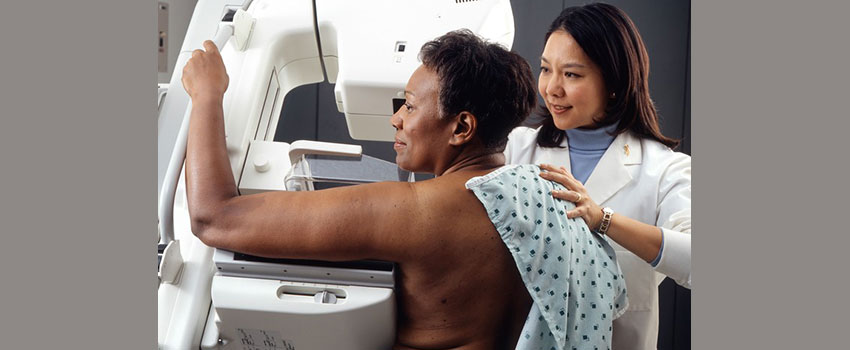Cancer Prevention and Screening

According to the American Cancer Society, there is strong evidence that an individual's risk of developing cancer can be substantially reduced by healthy behavior:
- don't use tobacco
- get sufficient physical activity
- eat healthy foods in moderation
- participate in cancer screenings according to recommended guidelines
- get vaccinated against the Human Papillomavirus (HPV)
What can you do — NOW — to reduce your risk of cancer? Resume Cancer Screening and Treatment
How the COVID-19 pandemic has impacted recommended cancer screening and cancer care:
- In the United States, studies have found more than one third of adults failed to receive recommended cancer screening during the pandemic.
- 43% of patients have missed routine preventive appointments due to COVID-19 fears.1
- 35% of American Adults had a cancer screening scheduled during the pandemic and missed it.2
- An estimated 22 million cancer screenings were cancelled or missed between March and June of 2020.3
- One study found, at the initial peak of the pandemic in April, screenings for breast, colon, prostate, and lung cancers were lower by 85%, 75%, 74%, and 56%, respectively.4
- Another study determined the number of cervical, colon and breast cancer screening tests dropped by more than 80% in spring of 2020 due to concerns about COVID-19.5
- Another study found diagnoses for six major cancer types dropped by nearly 50%.6
- Regulations for travel and indoor businesses can vary by state and timing. These changes and the resulting confusion have factored into a 70–80% reduction in the number of patient visits to doctor offices, including a 76% decline in patients presenting with asymptomatic conditions.7
- An estimated 12 million individuals have lost their employer sponsored health insurance coverage.8
Check out our Cancer Doesn’t Wait for COVID series:
SEE ALSO:
What You Need to Know About the COVID Vaccine and Mammograms
Why this matters:
- Screening saves lives.
- More than 600,000 people died from cancer in the US in 2020, according to the latest estimates from ACS.9
- The earlier the cancer is detected, the more options there are for treatment, and the better the chances for survival.
- The National Cancer Institute (NCI) states that almost 10,000 excess deaths in the US from breast and colorectal cancer alone over the next 10 years will be because of pandemic-related delays in cancer screening and treatment.10 This estimate does not account for other cancer types and assumed only a 6-month disruption in care, suggesting the actual excess deaths could be much higher.
- Pandemic-related disruptions will likely exacerbate existing disparities in cancer screening and survival across groups of people who have systemically experienced social or economic obstacles to screening and cancer care.
What we should do about it:
- Prioritize cancer screening, as long as it is safe to do so
- Provide the public with safe options for cancer prevention and early detection.
- Focus efforts on promoting screening and overcoming barriers for vulnerable populations.
- Communicate COVID-19 risks to the public in a transparent and trustworthy manner.
- Encourage lawmakers and regulators to implement the urgent process and policy changes that will sustain access to primary care and facilitate the safe return to pre-pandemic screening rates.
Resources:
- Rogel Cancer Center Cancer Screening Guidelines Brochure [pdf]
- NCCN.org/resume-screening
- NCCN.org/covid-19
- acs4ccc.org/ReengageLetter
Continue learning about cancer prevention and screening:
|
Mammograms, Colonoscopies and Pap tests can help find the earliest signs of cancer. |
One-third of all cancer deaths are linked to diet and physical activity. |
Evidence suggests a healthy life reduces cancer risk. |
1 Prevent Cancer Foundation. (2020, August). Back on the Books” - A Lifesaving Initiative in the Face of COVID-19.
2 Prevent Cancer Foundation. (2020, August).Back on the Books” - A Lifesaving Initiative in the Face of COVID-19.
3 Three Months of COVID-19 May Mean 80,000 Missed Cancer Diagnoses. (2020, May). Medscape.
4Patt D, Gordan L, Diaz M, et al. The Impact of COVID-19 on Cancer Care: How the pandemic is delaying cancer diagnosis and treatment for American seniors. JCO Clin Cancer Inform Published online October 21, 2020. Accessed October 22, 2020. doi:10.1200/CCI.20.00134
5The Pandemic Is Delaying Cancer Screenings and Detection The missed checkups could result in later, more severe diagnoses down the line. (2020). Scientific American, 1–3.
6Kaufman HW, Chen Z, Niles J, Fesko Y. Changes in the Number of US Patients With Newly Identified Cancer Before and During the Coronavirus Disease 2019 (COVID-19) Pandemic. JAMA Netw Open. 2020;3(8):e2017267. doi:10.1001/jamanetworkopen.2020.17267
7Aitken, M., & Kleinrock, M. (n.d.). Shifts in Healthcare Demand, Delivery, and Care During the COVID-19 Era.
8Sonfield, A., Frost, J., Dawson, R., & Lindberg, L. (2020, August 3). Covid-19 Job Losses Threaten Insurance Coverage and Access to Reproductive Health Care for Millions. Retrieved 2020, from https://www.healthaffairs.org/do/10.1377/hblog20200728.779022/full/.
10 Sharpless, N. (2020, June 19). Covid-19 and Cancer. Retrieved 2020, from https://science.sciencemag.org/content/368/6497/1290.abstract.

